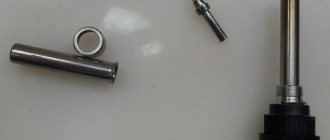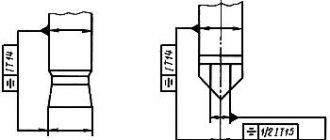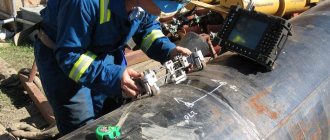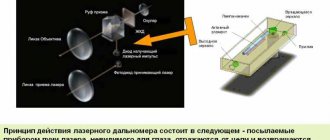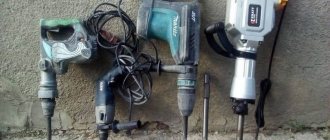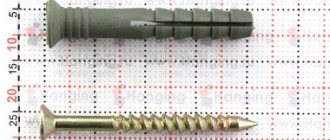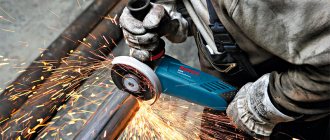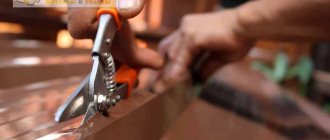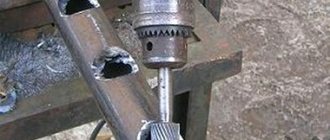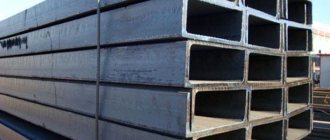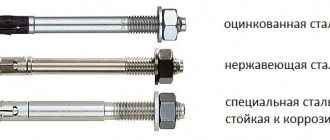Cutting metals with carbide inserts accounts for about 70% of all machining. This is not surprising. Their use allows you to increase the cutting speed by 3-6 times compared to traditional high-speed cutters. The efficiency of machine tools increases by 2-3.5 times. Currently, there are different types of carbide inserts, each of which has its own characteristics. What these features are and how to take them into account when choosing a plate will be discussed below.
Classification of carbide inserts
Most cutting tools consist of two parts: the holder and the cutting edge. The holder attaches the cutter to the machine, and the edge directly removes chips from the workpiece. It is precisely carbide plates that are used as the material for the cutting edge.
There are many factors that affect the efficiency of the cutting process. This includes the workpiece material, serial production, type of cooling, etc. Depending on this, there are many types of instruments. To put it simply, they are classified according to the type of alloy from which the plate is made and the method of attachment to the holder. Let's now look at each category in more detail.
Types of plates by material type
In most cases they are made from:
- Tungsten-cobalt alloy.
- Titanium-tungsten-cobalt alloy.
- Titanium-tantalum-tungsten-cobalt alloy.
- Titanium carbide alloy.
1. Carbide inserts based on tungsten and cobalt are recommended for cutting materials that produce chips. This category includes copper and aluminum alloys, cast iron and plastics. This variety is characterized by increased wear resistance and is used for finishing milling with the highest possible cutting speed, but the depth of cut and feed are quite low.
All types of tungsten-cobalt plates have high strength properties. The bending strength ranges from 1175-1470 MPa. Hardness reaches up to 75 units on the Rockwell scale.
Increasing the amount of cobalt in the composition of the plates has a positive effect on their mechanical characteristics. In particular, there is an increase in bending strength, ductility and toughness.
2. A plate made of titanium-tungsten-cobolt alloy is intended for cutting metals that produce drain chips. Compared to the above plates, it has reduced thermal and electrical conductivity, but at the same time it is ahead of them in terms of oxidation resistance, hardness and heat resistance.
Also, these carbide products are characterized by an increased adhesion temperature to steels, which increases their wear resistance to sliding chips. All this allows you to achieve higher cutting speeds.
The specified carbide plates are regulated in terms of mechanical properties by GOST 3882-74. According to it, the plate is capable of withstanding bending loads of up to 1666 MPa. Its hardness is at least 87 HRA units.
As the percentage of titanium increases, the rigidity of the plates decreases, but wear resistance increases. An increase in cobalt in the composition helps to increase strength and toughness, but has a negative effect on wear resistance.
3. Plates based on cobalt, tantalum, titanium and tungsten are characterized by an increased hardness value, which is equal to 95 HRA units. Carbide inserts alloyed with tantalum are distinguished by improved fatigue characteristics under alternating loads, heat resistance and oxidation resistance.
These carbide inserts do not lose their mechanical properties up to 900 ºС and have a low creep coefficient, which makes them possible to use in the most severe operating conditions. This means the presence of a large cutting diameter, significant temperature and power loads.
4. Carbide titanium carbide insert has the lowest oxidation and heat resistance value than all the above mentioned carbide inserts. Titanium carbides act as a substitute for scarce tungsten. For this reason, the use of this alloy is advisable when the load on the plate is light. It is used for semi-finish milling of gray and ductile cast iron.
These carbide inserts also have lower mechanical properties. Their bending strength is 900 MPa. Hardness no more than 70 HRC units.
Differences between removable and permanent braces
The first can be considered a lightweight option. Such arcs:
- cheaper than those that cannot be removed independently;
- not very effective for noticeable problems, more suitable for maintenance therapy.
What does a removable dental plate look like? This is a structure made of soft plastic, it is attached to metal hooks by the teeth. Children's options are often decorated with sparkles or made colorful to make them more pleasant for the child to use.
An undoubted advantage is that this option can not be worn all the time, getting rid of the device during meals, and in some cases during sleep (as prescribed by a doctor). However, they need to be used as often as possible, otherwise there will be no visible effect: sometimes even a break of one day significantly complicates the treatment.
Methods for joining carbide inserts to steel
More than 60% of all plates are installed into the tool by soldering. This is due, first of all, to the simplicity of the fastening technology.
The quality of soldering is influenced by many factors, among which are the type of flux and solder, as well as the material of the holder. In addition, the adhesion force of the plate to the tool body depends on the surface frequency, heating temperature and type of cooling. Due to the different values of the thermal coefficient of linear expansion of the plate and holder, due to differences in materials, residual stresses are formed during soldering. During further operation of the cutter, they can cause cracks to appear on the surface of the plates. Carbide plates are soldered using copper-based solders. Silver solders are used only in the production of particularly complex tools.
When soldering, fluxes are used to wet the surfaces of the materials being sintered. This is done to prevent oxidation processes from occurring, which contributes to a more rigid adhesion of the plate to the holder.
Various types of structural and alloy steels are used as material for the tool body. The most common steel grades are 30KhGSA, 45.
In cases where there is a strong cyclic load, fastening by soldering is replaced by fastening by diffusion welding in a vacuum. Welding occurs as a result of the penetration of atoms of contacting surfaces into each other. This process takes place under conditions of elevated temperature and pressure. This technology allows you to increase the adhesion force of the plate to the holder by 2-3 times.
The development of new types of adhesives has also made it possible to use the gluing method when fastening carbide plates. The main advantage of this method is the absence of the formation of internal stresses, which has a positive effect on the durability of the cutter. The strength characteristics of the adhesive are increased by doping its composition with various fillers, in particular asbestos.
The glue connection performed well when working with low heat generation and cutting force. This is finishing and semi-finishing of cast iron and non-ferrous alloys.
More and more production is beginning to produce removable carbide inserts, which are attached to the tool using threads and have the ability to rotate around an axis. Previously, they are given a special shape in the form of polyhedra (triangle, rhombus, rectangle), each side of which is a cutting edge. All this allows you to reduce the time or completely avoid re-sharpening.
This method is becoming more and more popular from year to year, because... as it has a number of significant advantages:
- No thermal stress.
- Easy to replace dull blades.
- High level of productivity.
Indications for use
The device is installed if necessary:
- prevent possible displacement of teeth, keep them in the correct, natural position;
- adjust the shape of the jaw bones or the width of the palate;
- expand interdental distances, get rid of crowding (in children);
- consolidate the result after wearing braces;
- slow down bone growth.
There are also contraindications, but they are few:
- severe mental disorders;
- some respiratory tract disorders;
- allergy to the metal from which the device is made;
- exacerbation of periodontal diseases.
If the oral cavity is not sanitized, there are caries, problems with the gums, the enamel looks bad: before you start wearing a child or adult plate to straighten teeth, you need to get rid of concomitant diseases.
Selecting a cutting insert when machining various metals
The feasibility of using one type or another of carbide inserts is determined by the following factors:
- Brand of processed material;
- Workpiece condition;
- Type of technological operation;
- Type of equipment use;
- Cutting mode.
In general, when cutting cast iron, non-ferrous alloys and plastics, it is recommended to use tungsten-cobalt based inserts. These alloys have a higher resistance to pulsating loads, which is typical for this type of work.
If there is a cutting speed of over 200 m/s and a cutting load on the cutter of more than 800 kgf, carbide inserts are used, additionally alloyed with tantalum and titanium.
Rate this article:
Rating: 0/5 — 0 votes
Photos before and after wearing a dental plate - what the result of treatment looks like
Treatment of malocclusion or dentition is not a quick process, but the result speaks for itself. For example, here are the “after” photos.
Advantages and disadvantages of records
The advantages of fixed orthodontic braces include:
- effectiveness against malocclusions, gaps, grouping;
- relatively low cost;
- no need for active patient action (especially important for children - it is enough to follow simple operating instructions);
- the ability to save the entire row without removing the “extra”, as before braces;
- expansion of the jaw (in children), so that subsequently the permanent incisors and molars erupt correctly and do not interfere.
Before you start wearing dental plates, you should familiarize yourself with the list of potential inconveniences:
- ineffective for significant pathologies;
- the possibility of an allergic reaction to plastic or metal alloy components;
- risk of gum inflammation (in this case, consultation with the treating orthodontist is required);
- discomfort when wearing (especially initially);
- the likelihood of a change in diction (the patient will have to adapt to the new state and not plan important meetings during the adaptation period);
- lack of aesthetic appeal (it is better to find out in advance everything about the condition of the teeth and clarify what a dental plate looks like for a child or adult).
How effective are the devices?
If the problem is not advanced, arches are enough to get an even, beautiful smile and get rid of defects. Only an orthodontist can give the most accurate forecast - he will also advise which device should be chosen.
The best option is to use the design at a young age, as this reduces the likelihood that repeated correction will be needed after adulthood. The doctor will select the optimal wire thickness to achieve the effect.
